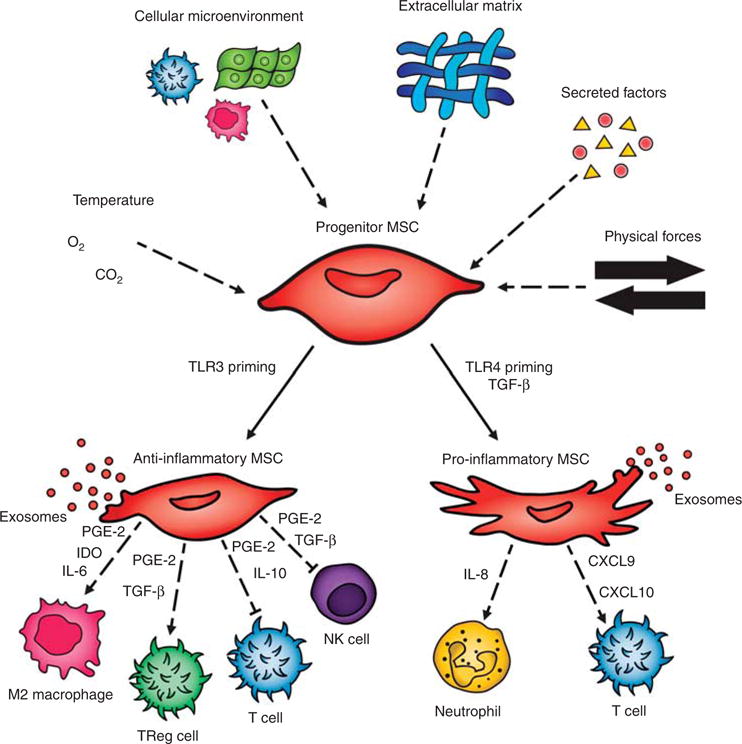Figure 1.

Mesenchymal stem cell (MSC) function is regulated by the complex interplay of numerous microenvironmental stimuli, including local cell– cell interactions, physical stimuli from the extracellular matrix and mechanical stress, and chemical signals from circulating factors, oxygen tension, and acid–base status (64). Under certain environmental stimuli, some populations of MSCs transform into divergent phenotypes (6). Toll-like receptor- 3 (TLR-3) priming has been shown to induce an anti-inflammatory phenotype (14). Anti-inflammatory MSCs regulate a variety of inflammatory cells through the secretion of exosomes and bioactive substances such as prostaglandin E-2 (PGE-2), transforming growth factor-β (TGF-β), interleukin-6 (IL-6), interleukin-10 (IL-10), and indoleamine 2,3-dioxygenase (IDO) (23). TGF-β and Toll-like receptor-4 (TLR-4) induce a pro-inflammatory phenotype (14,32), which causes activation of pro-inflammatory cells through the secretion of exosomes and bioactive substances such as interleukin-8 (IL-8), chemokine ligand 9 (CXCL9), and chemokine ligand 10 (CXCL10) (23).
